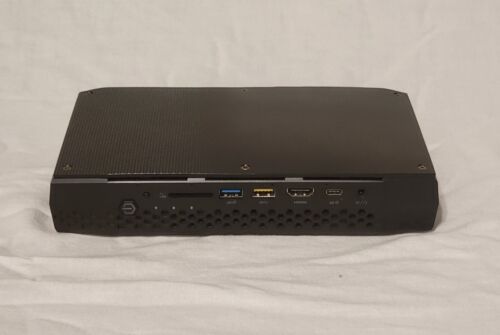Why You Should Have a Home Lab
Home labs are – in my opinion – one of the single greatest ways to develop core skill sets in IT; be it networking, administration, automation, and much more.
If you have worked a job in an IT environment, you are usually limited with the amount of tinkering and exploring you can do. With a home lab, it's all yours; you build it, you break it, you research it, you fix it.
The Home Lab Experience
Home Labs Are...
- A monetary commitment
- A time commitment
- Marketable resume enhancements
- Great to talk about in job interviews
- A source of immense knowledge
Skills One Can Learn in a Home Lab
- Virtualization
- Server Administration
- Network Engineering and Administration
- Systems Engineering and Administration
- Cybersecurity (Red and Blue)
- Software Development
- DevOps (CI/CD)
- Database Administration
- And more!
Home Lab Design
Everyone's home lab will look different, mainly due to the fact that everyone's homes are different. Perhaps your house is wired with network cabling, perhaps not.
Perhaps you have a room down in the basement far enough away to insulate the noise of a server rack. And maybe, you have patch paneling installed with multiple network drops throughout the house.
Maybe, you live in an apartment with a single network drop where the internet service provider's (ISP) equipment is installed. In this case, maybe you only have single modem and wireless router.
The point is: work within your constraints. You may be happy with a simple setup or you may want to make changes later as time, money, and circumstances permit.
Lab Equipment Scouting
Minimum Recommendations
- At least two network interfaces for redundancy and NIC bonding
- At least two disk bays
- 128 GB to 256 GB SSD for the operating system
- 1TB+ SSD or 10,000 RPM HDD for storage
- At least a single quad-core, hyperthreaded CPU
- Enterprise-grade preferred (eg. Intel Xeon, AMD Threadripper)
- More CPU cores allows for larger workloads
- Motherboard capable of utilizing 64GB+ RAM (preferrably server RAM)
- A system that will grow with you
Small Form Factor Computers
If space is an issue – or you are not planning on using a server rack – there are some small computers that have decently powerful specifications with a small footprint.
- Intel NUC
- Minis Forum
- Beelink Mini PC
- HP Mini Workstations
- Dell OptiPlex
- Asus ExpertCenter
- MSI Pro Mini PC
- Lenovo ThinkCentre Tiny Desktops
- Laptops
Some Form Factors to Consider
- Stick PC
- Mini PC
- Laptop
- Tower
- Rackmount
Equipment Scouting Process
You should have a good idea of what kind of system you want before you start looking. What form factor are you looking for? What are the minimum specifications you prefer?
Some Questions to Consider
- CPU
- Which CPUs are compatible? How many sockets? How many cores per CPU?
- GPU
- Which GPUs are compatible?
- RAM
- What is the maximum amount of RAM?
- Number of pins?
- How many DIMM slots?
- Double data rate (DDR)?
- Frequency?
- What is the maximum amount of RAM?
- Disks
- How many disk bays?
- 3.5" or 2.5" disks?
- If 3.5", do you want a 2.5" adapter?
- How many disk bays?
- Power Supply
- How many network ports? Speed?
Examples of Good Buys*
* Updated for June 2023
Tower and Rackmount Servers
1U and 2U labelling — be advised that they are very loud under heavy workloads, consume more electricity, and require a server rack to mount them.If you're looking to get the most value for your money, rackmount servers are the way to go. Due to the massive size of the server case and motherboard, you can often find very good deals on rackmount servers with:
- Multiple CPU (lots of cores)
- High quantities of RAM (hundreds of gigabytes)
- Large amounts of storage (tens of terabytes)
I'd recommend putting in some different system specs into LabGopher and seeing what you can find. I think you'll be surprised how cheap some of these servers can be. Some of the servers may be many generations older as well.

Mini PCs

- $500.00 (free shipping)
- Quad-core, hyperthreaded Intel i7-8705G
- Dedicated graphics
- 64 GB RAM
- 512 GB NVMe SSD
- Dual Gigabit Ethernet

- $575.00 (free standard shipping), currently on sale
- Brand new
- Octa-core, hyperthreaded AMD Ryzen 9 6900HX
- AMD Radeon 680M Graphics
- 64 GB RAM
- 1 TB SSD
- 2.5 Gigabit Ethernet

- $379.99 (free shipping)
- Hexa-core, hyperthreaded Intel i7-8700T
- 32 GB RAM (32 GB max per vendor, chipset supports 64 GB)
- 1 TB SSD
- Gigabit Ethernet

- $179.00 (free shipping)
- Quad-core, hyperthreaded Intel i7-7700T
- 16 GB RAM (32 GB max per vendor, chipset supports 64 GB)
- 512 GB SSD
- Intel Gigabit Ethernet
Where Do I Start Building My Lab?
Step 1
- Modem: $
Depends on your ISP and Internet service type. You may want to upgrade your modem to a more high performance model. Make sure it’s compatible with your ISPs requirements. - Router | Firewall: $ – $$$
Depends on the quality router you get and the feature set (can also build your own pfSense firewall). You should aim for a router with 802.1q VLAN support - 8 Port Managed Switch: $
Gigabit managed switches with 802.1q are surprisingly affordable. Brands like Netgear will do just fine for the home network. Just make sure it’s managed. - Virtualization Server: $$ – $$$
Probably the most expensive item on this list, with good reason. Just make sure you use SSDs where possible.
Step 2
- 802.1q Compatible Wireless AP: $ – $$$
Not as important, but will enhance your home security by creating VLANs and firewall rules for different wireless networks.
Step 3
- Mini PC Cluster: $ – $$$
Eventually, you'll need to extend your virtualization capabilities beyond just one server. You can easily purchase some mini PCs, install the hypervisor, and cluster them to your existing virtualization server to expand resources.
Step 4
- Use your imagination. Think of some projects you're interested in. Check out YouTube videos online from other home lab creators.
Visualizing a Server Cluster
Creating a cluster is a great way to add more CPU, RAM, and disk when low. You can then migrate existing VMs and Linux Containers to — and create new ones on — your new Proxmox node (if that's the hypervisor you end up choosing).
If you're still somewhat new to Proxmox, new to home labbing, or the concept of clustering servers is eluding you, I hope this diagram will help.
Supplemental Links
Lab Equipment Links
LabGopher (eBay aggreator)
eBay
Mercari
OfferUp
Newegg
Memory.net (RAM upgrades)
Server Monkey
The Server Store
Got Equipment?
Start deploying your home lab environment!







